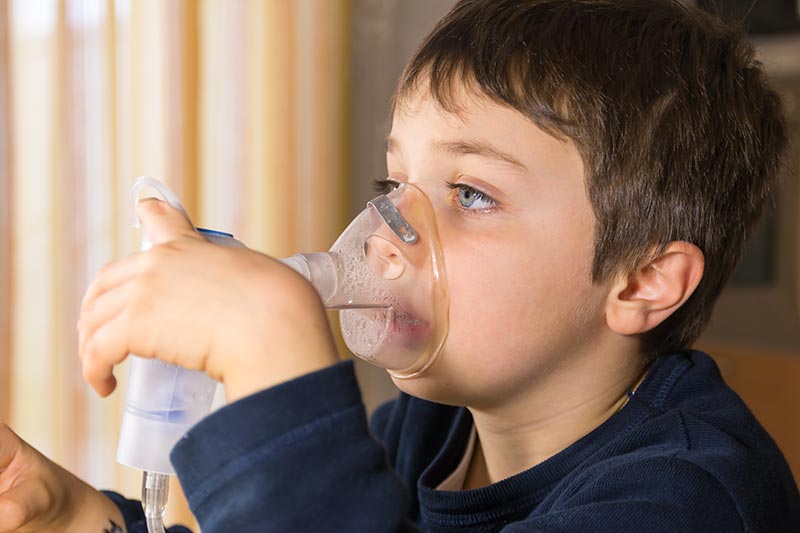About respiratory tract infections
Respiratory infections are infections which affect your respiratory tract. This starts at your nose and ends in your lungs. They can be divided into upper respiratory tract infections and lower respiratory tract infections. Upper respiratory tract infections include sinusitis, tonsilitis and the common cold. These are usually self-limiting and will go away by themselves. Over the counter medicines from a pharmacy can also help ease the symptoms.
Lower respiratory tract infections include bronchitis and pneumonia. These are more severe and tend to require treatment with antibiotics. Lower respiratory tract infections have symptoms such as fever, fatigue, shortness of breath and sometimes chest pain.
It is also important to remember many respiratory infections are caused by viruses. Therefore, antibiotics are not helpful as viral infections will not respond them. This is actually a good example of how antibiotic resistance can be made worse. When antibiotics are given (or requested by patients) unnecessarily, for an infection is likely to be viral, it worsens resistance.
Antibiotic-resistant respiratory infections are a type of infection that do not respond to most – or any – of the most common antibiotic treatments. Find out more about respiratory tract infection antibiotics, treatments and care below.

Who is at risk from antibiotic-resistant respiratory infections?
Those at greatest risk of a respiratory tract infection that is resistant to antibiotics are often those with other underlying medical conditions. People with weakened immune systems either due to illness or as a side-effect of current treatment are also at risk. Those often affected have already been taking courses of antibiotics can develop resistance too. Certain respiratory diseases such as COPD, cystic fibrosis or bronchitis can increase the number of respiratory infections a person may have. Therefore the number of antibiotic courses they need over time is also higher. This in turn increases the risk of developing a resistant bacterial infection through increased exposure to antibiotics. Another risk factor is being in hospital. When people are in hospital, they are at increased risk of picking up a resistant infection, compared to when at home.
Resistant bacteria most often develops when antibiotics are used inappropriately. You can help prevent the development of resistant bacteria by following the advice below:
- Take your antibiotics as prescribed
- Try not to miss any doses
- Complete the full course, even if you feel better
- Don’t share your antibiotics with anyone else

Hear Jill’s story
You can read Jill’s story here about how removal of her spleen now leaves her partly immunocompromised and anxious about developing resistant infections like bacterial pneumonia.
What type of bacteria usually cause respiratory infections?
Respiratory infections can be caused by various classes of bacteria. You can find out more about gram positive, gram negative and atypical bacteria here. Examples of bacteria which commonly cause respiratory infections include Haemophilus influenzae, Streptococcus pneumoniae, Moraxella catarrhalis and Mycoplasma pneumoniae. Respiratory infections caused by gram negative bacteria, such as Escherichia coli, Klebsiella pneumoniae and Acinetobacter baumannii, are usually harder to treat. These can lead to more severe infections. This means they often need to be treated with more antibiotics or a more powerful antibiotic. Often, they’ll also require higher doses or with longer courses. These types of infection are usually only found in people who have weakened immune systems or have picked up the infection while in hospital. Multi drug resistant gram negative bacteria (MDRGNB) is a growing problem in respiratory infections. There is a limited range of antibiotics which can now treat these infections and of those which are effective, some can have undesirable side-effects.
Read more about these resistant bacteria.
Download our patient leaflet on Multi Drug Resistant Organisms (MDRO).

Tuberculosis

Tuberculosis (TB) is caused by mycobacterium tuberculosis. It is treated with a long course of several antibiotics taken together. An example would be a combination of rifampicin, an antibiotic which has been used for a long time, plus isoniazide. If the bacteria prove resistant to one of the drugs in the combination, your antibiotic course will usually be extended by a few months. If your infection is resistant to rifampicin and isoniazid (you may see this referred to as multi-drug resistant TB or MDR-TB) then doctors will need to try other less commonly used antibiotics to try and cure your TB. There are also rarer instances of ‘extensively drug resistant tuberculosis’ (XDR-TB). This is resistant to many drugs which are often used initially and also to at least one drug usually kept as a back-up treatment.
COVID-19
COVID-19 is a disease caused by the new coronavirus, SARS-COV-2. As it is a viral infection, antibiotics will not cure the infection, however COVID-19 can cause secondary bacterial infections. Therefore, you may be prescribed antibiotics if your healthcare team think you have a bacterial infection in your lungs (like bacterial pneumonia) in addition to COVID-19.
Read more about COVID-19 and treatment here.
Find answers to many questions about COVID-19 and antibiotics.

Cystic fibrosis

Cystic fibrosis is an inherited condition that causes sticky mucus to build up in the lungs and digestive system. This causes lung infections and problems with digesting food. The thick sticky mucous building up in the lungs creates the perfect environment for bacteria to multiply and cause infections.
Pseudomonas aeruginosa is a type of bacteria which commonly infects the lungs of patients with cystic fibrosis. It is a ‘hard to treat’ and commonly resistant bug which can be difficult to completely eradicate. This is why those with cystic fibrosis are often given preventative antibiotics administered via an inhaler. This seeks to reduce the number of Pseudomonas aeruginosa in the airways even when they don’t have an active infection. This can reduce the risk of someone developing chronic lung infections with Pseudomonas aeruginosa.
Less common types of respiratory infections include legionnaire’s disease, chlamydia psittacosis from birds and Q fever.
What are the symptoms of an antibiotic-resistant respiratory Infection?
Antibiotic resistant infections will usually have the same initial symptoms as a simple infection which can be treated by antibiotics. These include a cough, fatigue, fever and sometimes shortness of breath. Resistant infections can be longer lasting and result in damage to your lungs or a longer stays in hospital. They can sometimes lead to more severe infections such as sepsis. This is a severe reaction to an infection which can move quickly through the whole body, cause damage to your organs and can potentially be fatal.
Some respiratory infections can cause a cough which can last for a few days or become chronic which can last for months. It is always best to speak to your doctor if you have an ongoing unexplained cough.

Are respiratory infections contagious?

With respiratory infections it is important to follow the ‘catch it, bin it, kill it’ advice. Use a tissue when coughing or sneezing. Dispose of the tissue immediately. Wash or sanitise your hands straightaway.
If you have an infection of any type – particularly one that is antibiotic resistant – there is always a risk that the bacteria causing the infection could infect those around you if you do not keep to proper hygiene advice. Find out more about what you can do to prevent the spread of harmful bacteria. COVID-19 has reinforced the importance of this advice, including good hand hygiene. The COVID-19 pandemic has also shown how rapidly and easily a respiratory infection can spread from one person to another.
How are antibiotic-resistant respiratory infections usually treated?
When you go to your doctor or hospital with a respiratory infection, they will not usually be able to tell which bug is causing your infection. Therefore, doctors will treat you according to antibiotic guidelines. These take into consideration which bugs usually cause your type of infection and which antibiotics usually work for these. These are called ‘empirical guidelines’ which all hospitals will have. At this point, healthcare staff may take a sputum (phlegm) sample. You’ll be asked to cough up some phlegm for testing in a microbiology laboratory. This will determine what bacteria are present and causing the infection. They also test for which antibiotics can kill these bacteria. This test is known as ‘culture and sensitivities’. The microbiologists will work with your healthcare team to make sure you are given an antibiotic treatment which should effectively deal with your infection.

Hear Lisa’s story
You can read Lisa’s story here where she describes experiencing a number of resistant bacterial respiratory infections.
What happens if I have a multi drug-resistant respiratory infection?

You may need to be prescribed a powerful antibiotic which is effective against many bugs but is reserved for only multi drug resistant infections to stop the development of resistance to these antibiotics. Some of these drugs may have side-effects and you will need to be monitored closely to ensure the antibiotic is working and you do not develop any severe side-effects from the antibiotic.
If you are in hospital you will usually be isolated into your own room to reduce the likelihood of the bug spreading to other patients in the hospital. This is quite normal practice, because other patients are often vulnerable to infection, and their immune systems can be weakened making them more prone to picking up resistant bacteria in that environment.
How quickly will the infection spread? Is there anything I can do to stop it getting worse?
The speed at which an infection spreads depends on many factors, including the type of bacteria causing the infection, how long the infection has been present, the type of bacteria involved, and the health and habits of the person affected. Not all infections will spread, however respiratory infections, like pneumonia, can spread throughout the body if not treated effectively. In patients with sepsis, the lung was found to be the most common site of infection.
The most important guidance is to maintain good hygiene and follow the advice of your doctor or clinical specialist, and to let them know if your condition worsens or does not get better. Many NHS Trusts and NHS Boards have established Community Respiratory Teams and Services where specific patients can be referred to receive specialist help and support.
What do I do if I have a question about antibiotic-resistant infections?
If your question is about your own personal health, please contact your GP or the clinical specialist you have been seeing. In the case of an urgent, out-of-hours change in your condition, call 111 to find out whether you need to attend hospital. If you are experiencing a health emergency, attend your nearest accident and emergency, taking all of your medications with you.
If you are not seeking health advice but would like to talk to someone who understands antibiotic resistance and can help you find more information or provide a listening ear, get in touch with Arlene in our Patient Support Team.
Find out more
Explore our website to find out more about antibiotics, bacteria and the common infections they cause, and our research.
Help us make a difference
Antibiotic resistance could affect everyone on the planet, and estimates suggest it will be responsible for 10 million deaths a year by 2020. We are the only charity in the world dedicated to researching this issue, supporting patients affected by resistant infections and educating the public on antibiotic resistance.
Please make a donation or support our work today, and help us ensure a safer future for our children and grandchildren.

Disclaimer: Any medical information referred to in or through our website is given for information purposes only and is not intended: to constitute professional advice for medical diagnosis or treatment; to replace consultation with a qualified medical practitioner; to advocate or recommend the purchase of any product; or to endorse or guarantee the credentials or appropriateness of any health care provider. You are strongly advised to consult with an appropriate professional for specific advice tailored to your situation. Instead, information provided on our website is intended to provide helpful signposting towards further information and support and to provide an opportunity for you to simply share and discuss matters relating to antibiotic resistance with our Patient Support Officer.
